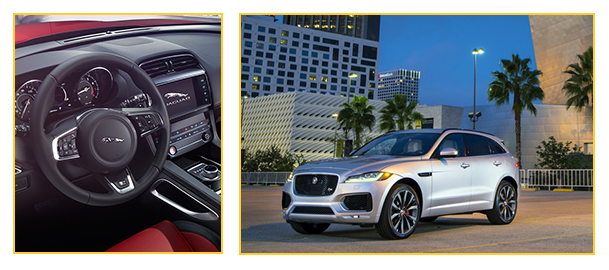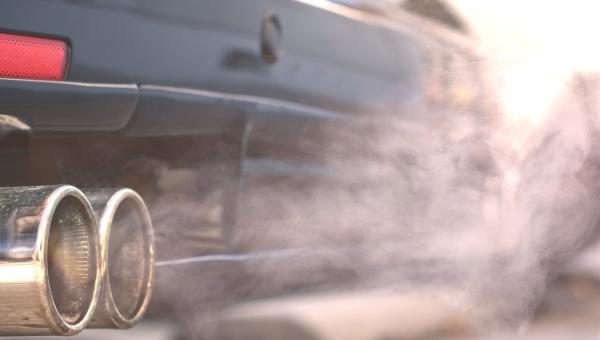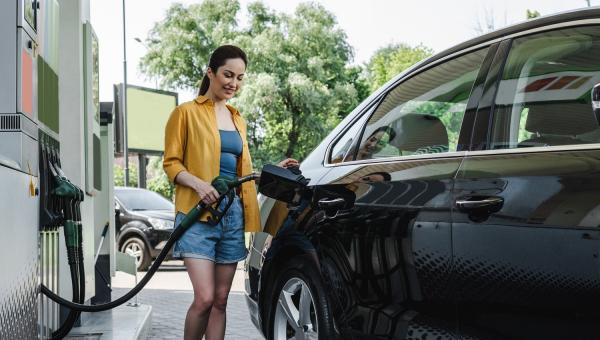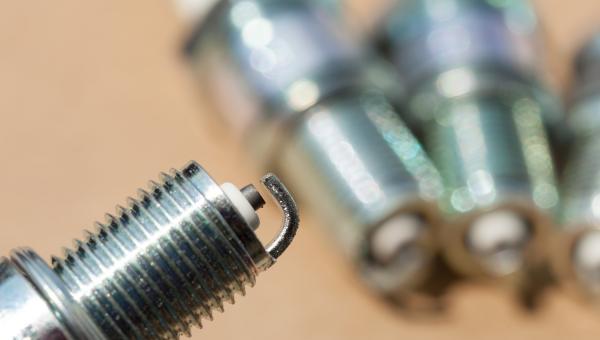Test Drive Notes Library
-
 Pros
Pros
- Looks. A lot of crossovers look pretty much the same these days. Jaguar managed to make one that looks better than the rest. It’s not overly-decorated (Hello, Lexus RX350!), or a cardboard box on wheels (Hello, Chevy Tahoe!). Instead, it’s a distinctively cool looking vehicle with the practicality of a crossover, with easy room for four and decent cargo area.
- Handling. The F-Pace handles more like a car than an SUV. It turns crisply, has little body lean, and does fine on twisty roads. It drives smaller than it is. We should note that our test car was an R-Sport model, which comes with large, 20-inch wheels and low profile tires that improve handling. Models with 18- and 19-inch wheels may handle differently…and ride better (see Cons).
- Power. Yeehaw! This thing has 340 HP from a V6 supercharged engine. It flies. It uses a pretty smooth eight-speed automatic transmission with shifter paddles, and all-wheel drive. Instant acceleration at all speeds.
- Brakes. It also stops really well. See passenger lipstick marks on the windshield.
- Comfortable seats. Both the front and rear seats are supportive and comfortable. There’s limited headroom in the back and what we’d describe as “enough” leg room. But up front, butts are coddled in very nice heated and cooled leather seats.
- Easy ingress and egress. The F-Pace is at a great height for most people, making getting in and out easy. The door sills are low and the door openings are wide.
- Five-Year Warranty. Good for Jaguar. As a company that’s hovered low in the “reliability” ratings for some time, they’re seeking to increase buyer confidence by offering a five-year/60,000 mile warranty.
-
 Cons
Cons
- Ride. When we think of Jaguar, what comes to mind is speed and comfort...a luxurious interior, like a living room that happens to be capable of smoothly going 80 mph. Not here. The F-Pace's ride is distinctively firm. Even harsh sometimes. Jaguar has tuned the F-Pace to be a sports car crossover rather than a luxury crossover. Those that are looking to be shielded from road imperfections or coddled in softness should look elsewhere.
- We should note, as above, that our R-Sport test model had harsh-riding 20-inch wheels, which improve handling and reduce comfort. It’s possible that the lower-end models, with smaller wheels, will ride a bit better. Although, then you have to think about….
- Safety feature availability. The most desirable safety features (forward collision warning and automatic emergency braking) are only available on the higher trim levels, the R-Sport and S. On those models you get basic automatic emergency braking and other goodies like blind spot monitoring standard. To get highway-speed automatic emergency braking, you have to add the optional adaptive cruise control package. Our test F-pace, without the adaptive cruise control, already rung the cash register at $62,000— base price of the R-Sport is just over $55,000.
- Engine noise. We don’t know if it’s “pumped in” engine noise, or just the natural tone of the exhaust, but the engine snarls at pretty much all speeds. It sounds cool at first, but quickly gets old. Wind noise and road noise are actually pretty well tamped down, but the roar/buzz of the engine is omnipresent.
- Annoying stop start system. To save fuel, the F-Pace shuts down the engine when you stop at traffic lights, or in stop and go traffic. Some of these system are easier to live with than others. The Jaguar is one that’s less easy to live with, in that it jolts the engine awake when you’re ready to go. Other manufacturers have done a better job making the “start” part of stop-start less noticeable inside the passenger compartment. You can disable the stop-start with the push of a button, but you have to do it each time you drive the car.
- Slow touchscreen. The touchscreen system feels a generation behind the best in the business. You have to wait for it to boot up before you can perform basic functions. And you have to slide through several screens to reach all the options. We found it to be a pain in the neck.
- Ergonomics. Jaguar made a couple of odd decisions. They gave us a radio volume knob, but put it on the far side of the console, so it’s not handy for the driver to reach. They also put the power window switches on top of the door, close to the windshield, where they’re difficult and unwieldy to reach. And more oddly, what did they put where the window switches should go (where your fingertips rest on the driver’s left armrest)? Seat memory buttons. Things you use once, after you buy the car.
- Finicky keyless door locks. Step out of the Jaguar, and like most luxury cars these days, you can just touch the door handle and all of the doors will lock. But it regularly took a number of tries to get the doors to lock. That got old fast.
Test Drive Notes Library
Get the Car Talk Newsletter
 Pros
Pros Cons
Cons


